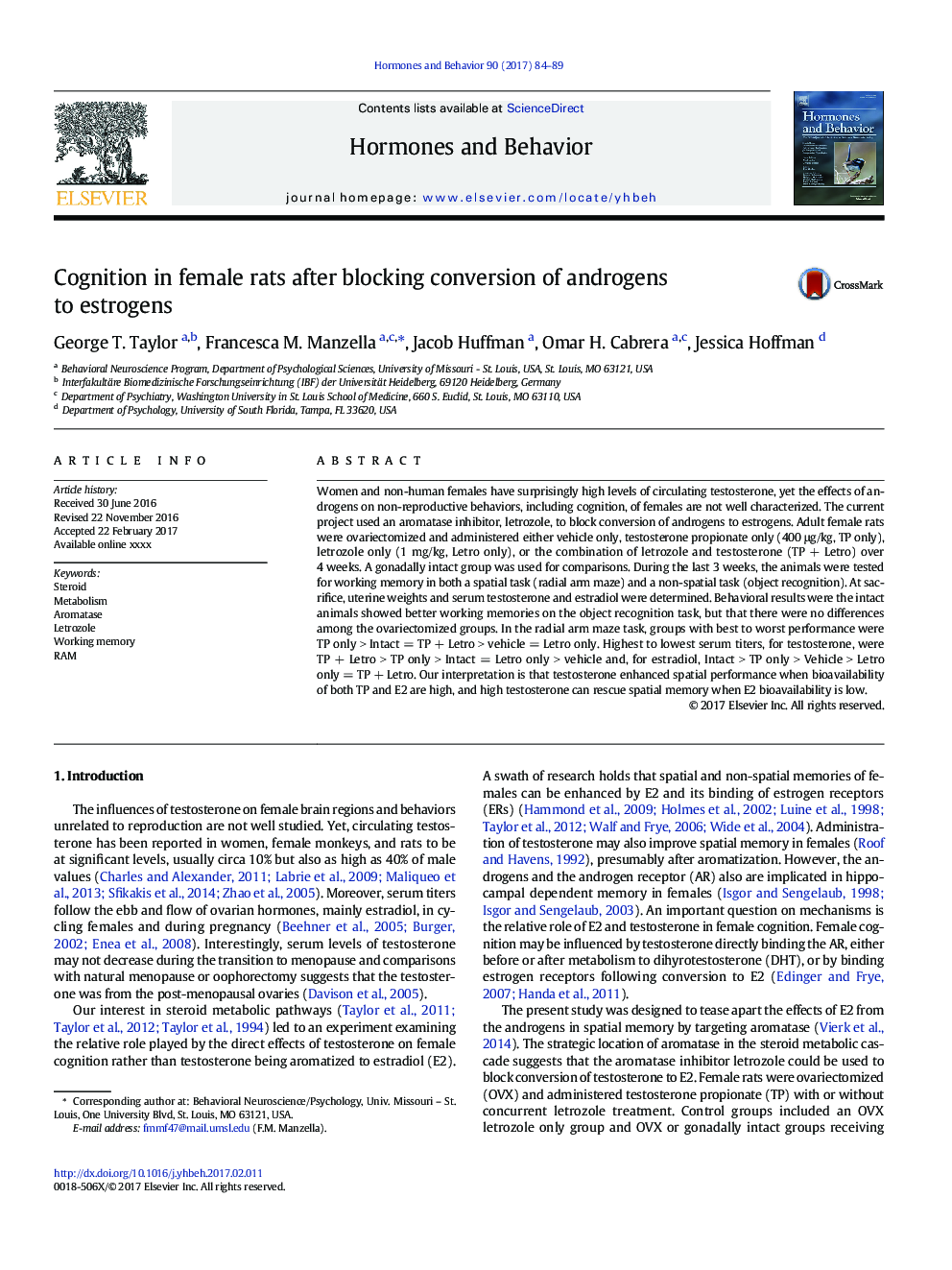| Article ID | Journal | Published Year | Pages | File Type |
|---|---|---|---|---|
| 4931041 | Hormones and Behavior | 2017 | 6 Pages |
Abstract
Women and non-human females have surprisingly high levels of circulating testosterone, yet the effects of androgens on non-reproductive behaviors, including cognition, of females are not well characterized. The current project used an aromatase inhibitor, letrozole, to block conversion of androgens to estrogens. Adult female rats were ovariectomized and administered either vehicle only, testosterone propionate only (400 μg/kg, TP only), letrozole only (1 mg/kg, Letro only), or the combination of letrozole and testosterone (TP + Letro) over 4 weeks. A gonadally intact group was used for comparisons. During the last 3 weeks, the animals were tested for working memory in both a spatial task (radial arm maze) and a non-spatial task (object recognition). At sacrifice, uterine weights and serum testosterone and estradiol were determined. Behavioral results were the intact animals showed better working memories on the object recognition task, but that there were no differences among the ovariectomized groups. In the radial arm maze task, groups with best to worst performance were TP only > Intact = TP + Letro > vehicle = Letro only. Highest to lowest serum titers, for testosterone, were TP + Letro > TP only > Intact = Letro only > vehicle and, for estradiol, Intact > TP only > Vehicle > Letro only = TP + Letro. Our interpretation is that testosterone enhanced spatial performance when bioavailability of both TP and E2 are high, and high testosterone can rescue spatial memory when E2 bioavailability is low.
Related Topics
Life Sciences
Biochemistry, Genetics and Molecular Biology
Endocrinology
Authors
George T. Taylor, Francesca M. Manzella, Jacob Huffman, Omar H. Cabrera, Jessica Hoffman,
